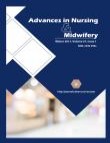Degree and types of domestic abuse in the elderly referring to
Author(s):
Abstract:
Background
Aging has always been concerned throughout history. The second half of the 20th century has been referred as population graying due to increased number of elderly people. Of related familial and social outcomes is the upsurge of antisocial behaviors and violence. Domestic elder mistreatment or abuse as a major health problem is a type of familial violence with a significantly increasing incidence in the last 2 decades. Since there is no specific organization to be responsible for this problem in developing countries like Iran, no information or evidence is available and limited studies are only limited to developed countries. Purpose
This descriptive study was conducted to determine the degree and types of domestic abuse in the elderly referring to parks of Tehran.Methods
400 elders 60 years and over including men and women from all parts of Tehran took part in the study. A questionnaire in 3 parts including demographics, types of abuse and open questions was used for data collection. The tool was validated by face and content methods and made reliable by internal consistency as well as test-retest methods. The questionnaire was completed by the researcher through interviewing the subjects.Results
Findings showed that 28% of the elderly was between 70 and 74, 38.2% had secondary education, 65.1% was married and 32.9% lived with their spouses. 87.8% of them experienced at least 1 type of abuse, 12.2% no abuse and 24.9% all 4 types of abuse. 84.8% experienced emotional abuse; 68.3%, neglect; 40.1%, financial exploitation; and 35.2%, physical abuse. A positive correlation was found between age and abuse. In contrast, no relationship was found between abuse and sex, educational level, marital status, living condition as well as geographic area.Conclusion
It can be concluded that domestic abuse is a widespread social problem which requires urgent, continuous and fundamental interventions. Clarification of the issue from different aspects, identification of predisposing and preventive factors and recognition of at-risk elderly are of high priorities in this regard.Keywords:
Language:
Persian
Published:
Advances in Nursing & Midwifery, Volume:18 Issue: 63, 2009
Page:
39
magiran.com/p619469
دانلود و مطالعه متن این مقاله با یکی از روشهای زیر امکان پذیر است:
اشتراک شخصی
با عضویت و پرداخت آنلاین حق اشتراک یکساله به مبلغ 1,390,000ريال میتوانید 70 عنوان مطلب دانلود کنید!
اشتراک سازمانی
به کتابخانه دانشگاه یا محل کار خود پیشنهاد کنید تا اشتراک سازمانی این پایگاه را برای دسترسی نامحدود همه کاربران به متن مطالب تهیه نمایند!
توجه!
- حق عضویت دریافتی صرف حمایت از نشریات عضو و نگهداری، تکمیل و توسعه مگیران میشود.
- پرداخت حق اشتراک و دانلود مقالات اجازه بازنشر آن در سایر رسانههای چاپی و دیجیتال را به کاربر نمیدهد.
دسترسی سراسری کاربران دانشگاه پیام نور!
اعضای هیئت علمی و دانشجویان دانشگاه پیام نور در سراسر کشور، در صورت ثبت نام با ایمیل دانشگاهی، تا پایان فروردین ماه 1403 به مقالات سایت دسترسی خواهند داشت!
In order to view content subscription is required
Personal subscription
Subscribe magiran.com for 70 € euros via PayPal and download 70 articles during a year.
Organization subscription
Please contact us to subscribe your university or library for unlimited access!


